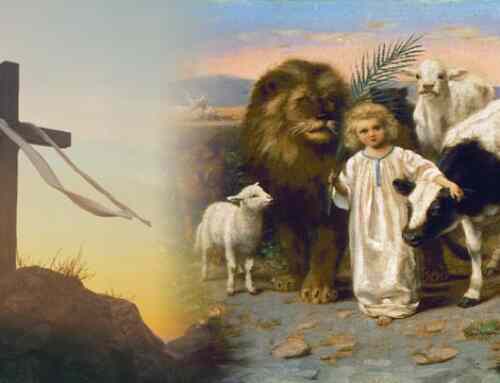Daniel is given visions of four beasts in chapter 7. The little horn is an outgrowth of the fourth beast replacing three previous horns. Verse 17 explains who the beasts are, “These great beasts, which are four, are four kings, which shall arise out of the earth.” The ten horns are also identified as kings (verse 24). Since the beasts represent grand empires, the horns are subdivisions of that beast’s empire.
There is a correspondence between Daniel chapter 2 and chapter 7. Both visions have four empires. In Daniel 2, the fourth empire has ten toes; whereas, in chapter seven, these toes are represented as ten horns. Daniel tells Nebuchadnezzar, king of Babylon, that he is the head of gold (2:38). Babylon was followed by Medo-Persia, then Greece, then Rome. Details in both chapters show how accurately Daniel’s description fits history. We will pass over this history to focus on the little horn.
The little horn replaces three of the original ten horns. It has eyes like a man and a mouth which speaks great things (7:8). Its look is proud; it makes war with the saints, speaks great words against God, wears out the saints, changes times and laws (puts his will above God’s), and reigns for a period called “time, times and dividing of times”. (Verses 20-25)
Chapter 8 verses 23-25 gives more details about the little horn. It also has a fierce countenance, speaks dark, confusing sentences, is powerful, but not by a military force, has influence and money, is deceitful and proud in its heart. It persecutes holy people.
Key phrases are repeated in Revelation. Chapter 13:1 has a beast with seven heads and ten horns with the name of blasphemy. This beast also persecutes the saints (verse 7) for a period of times, times and a half a times (12:14), which corresponds to Daniel 7:25.
The historic Protestant position is that the little horn is the antichrist and is the system of Papacy (not the individuals). It fits the description. It develops out of the Roman system. This is why the Apostle John could say, “this is that spirit of antichrist, whereof ye have heard that it should come; and even now already is it in the world.” (1 John 4:3) Papacy replaced three horns: the Lombards, Ravennas, and Ostrogoths. As the little horn spoke great things, so Papacy made great proclamations about the position of the Pope and the church. They have killed and tortured thousands of saints found in such groups as the Albigenses, Waldenses, and Huguenots. Protestants were persecuted through the “Holy” Inquisition starting in 1184 by Pope Lucius III. The laws and teachings of God have been replaced with the proclamations of church councils and decrees.
For a more in-depth study, please read the free PDF: "Can We Identify Antichrist?"










